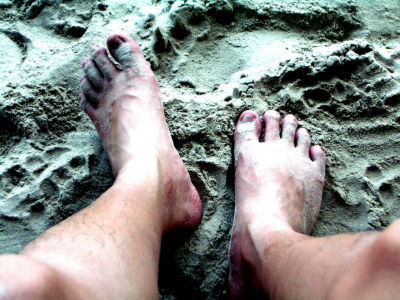A treatment that repairs a herniated disc like a puncture repair appears

Rest is the primary treatment for herniated discs, and surgery is performed if the symptoms are severe, but no matter how well you respond, there is a risk of recurrence. `` Therapeutic method that restores function like a puncture repair, '' developed by a joint research team led by Professor Lawrence Bonasser of Cornell University, can be used with conventional surgery and connects the surgical site more tightly than conventional sutures It is something that gives.
Combined nucleus pulposus augmentation and annulus fibrosus repair prevents acute intervertebral disc degeneration after discectomy | Science Translational Medicine
https://doi.org/10.1126/scitranslmed.aay2380

Like patching a flat tire: New fix heals herniated discs
https://medicalxpress.com/news/2020-03-patching-flat-herniated-discs.html
The spine is made up of 33 vertebrae, and between the vertebrae is a cushion-like tissue called the 'intervertebral disc' made up of the annulus fibrosus and the nucleus pulposus. A disc herniation causes the nucleus pulposus in the disc to leak out into the spinal canal inside the spine in some way, causing inflammation and pain.
If the nucleus pulposus protrudes and there is no pain, there is no problem, so no special treatment is given, but if the pain is severe, painkillers and nerve blocks are given. If you have numbness in the lower limbs or difficulty urinating, surgery to remove the leaked nucleus pulposus may be performed. However, surgery to remove the nucleus pulposus does not prevent another nucleus pulposus leak.
A collaborative team led by Professor Lawrence Bonasser of Cornell University spent over a decade developing a collagen gel incorporating the photoactive vitamin B derivative riboflavin .
After the nucleus pulposus removal, the collagen gel is patched and illuminated to activate riboflavin. As a result, the collagen fibers are bound by the chemical reaction and the gel is solidified. At this time, the gel becomes soil for growing new tissue, so it can close the hole more tightly than sutures.
Since this method can be performed in only 5 to 10 minutes, it is expected that it can be used not only for nucleus pulposus removal surgery but also for other disc degeneration and spinal cord treatment.
Related Posts:
in Science, Posted by logc_nt







